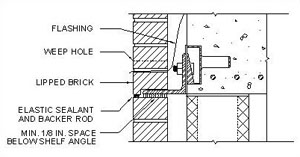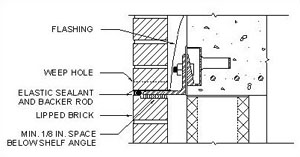Brick Brief: Lipped Brick
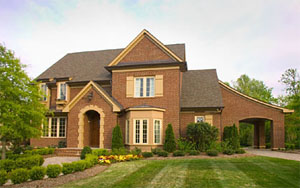 Photo courtesy of Sean Busher Photography - Brick SouthEast |
Lipped brick, also called shelf brick and rabbeted brick, are typically used at shelf angles and steel lintels to hide the steel from view. In some cases, a rather large horizontal expansion joint may be necessary to allow for movement, and the resulting sealant joint can be sizable and visually unappealing. To reduce the apparent size of the joint, a lipped brick can be used to cover the toe of the angle. Typical dimensions of lipped brick are shown in Figure 1. The manufacturer should be consulted to determine the dimensions of a lipped brick.
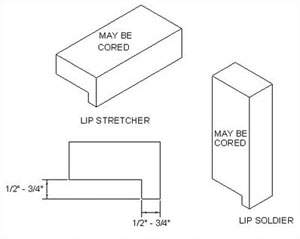 Figure 1 |
Manufacturing Lipped Brick
Lipped brick can be manufactured using either the extrusion process or the molding process. Molded lipped brick can be produced by either using a mold box with a lip form set in it or by saw cutting the shape from a regular brick. Saw cutting is more common for molded brick. When lipped brick are produced by the extrusion method, the direction of extrusion with respect to the projecting lip must be considered. A lipped stretcher can only be produced by extrusion if the unit is produced by end extrusion and is end cut. Units produced by extrusion with the bed surface perpendicular to the direction of extrusion must be cut to a rectangular shape before the lip can be formed. The lip is then hand cut. The latter is the most common method of manufacturing extruded lipped brick.
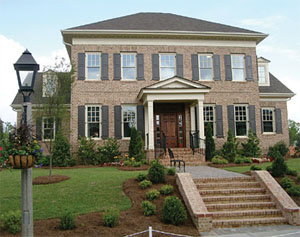 Photo courtesy of Simonini Builders - Brick SouthEast |
Site Cutting Lipped Brick
In situations when lipped brick are not manufactured for a job, the mason may cut the lipped brick at the site. Extreme care should be taken to ensure the proper size is achieved, and the cut brick should be subject to close scrutiny. Oversawing may cause the lip to be fragile. On the other hand, if the lip is too wide there may not be adequate room for bearing on the shelf angle.
The brick should first be cut parallel to the face. This will keep any oversawing from reducing the width of the projecting lip. The depth of the cut should be within 1/8 inch (3.2 mm) of the specified dimension. Receiving lipped brick from the manufacturer avoids the problem of field quality control.
Details
Detailing of lipped brick supported on shelf angles can be difficult. Since the lipped brick is at a support condition, two items must be considered: bearing and flashing. All brick walls must be supported on at least 2/3 the thickness of the brick wythe. For most four-inch (102 mm) nominal width brick, this requires 2-7/16 inch (62 mm) bearing on the angle. Tolerances in construction may make it difficult to achieve this minimum bearing, particularly if the lip prevents the brick from being adjusted on the shelf angle. Minimizing the width of the lip allows some room to accommodate construction tolerances.
Flashing is usually placed directly above the shelf angle as part of the drainage system of the wall (see Figure 2.) However, the lip may interfere with the placement of the flashing. This is particularly true when using a metal flashing, which would have to be bent to several planes; flexible flashing can be more easily bent in this application. To avoid difficulty in placing the flashing an alternate detail is proposed in Figure 3.
|
The preferred alternative is to place the lipped brick upside down beneath the angle (Figure 3). This allows the flashing to be placed directly on the angle without the problems of multiple bends. A disadvantage to this detail is the location of the lip relative to the toe of the angle. Due to construction tolerances the angle's toe may be directly above a portion of the lip or in contact with the lipped brick. If this occurs the angle may cause the lip to break off. This can be avoided by detailing the lip to be in front of the toe with additional room for tolerances.
Corners
When using lipped brick, it is important to consider what happens as this unit turns a corner. In many cases, a specially made shape will look better than a cut brick or a joint at the corner. A lipped corner brick is difficult to fabricate and impossible to cut at the job site. Proper discussions with the manufacturer can avoid problems with these units.
About the Author
The Brick Industry Association (BIA) is the national trade association representing distributors and manufacturers of clay brick and suppliers of related products and services. Go to www.gobrick.com for more information.
Illustrations courtesy of the Brick Industry Association












